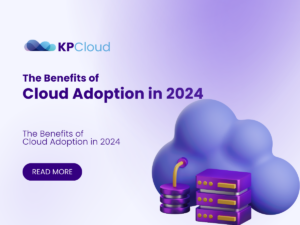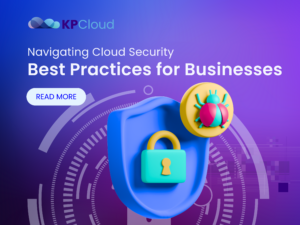Is Data Secure in Cloud Computing? How to Ensure Data Security on Cloud Computing
Cloud computing has been at the forefront of the digital transformation era, revolutionizing the way businesses operate, innovate, and scale. As companies increasingly migrate their data to the cloud, concerns about data security have become paramount. So, is data secure in cloud computing? And how can businesses ensure data security when leveraging cloud services? This blog post will delve into these pressing questions.
Understanding Cloud Computing
Before we delve into data security in cloud computing, it’s crucial to understand what cloud computing entails. It’s a model that provides on-demand access to shared computing resources, including servers, storage, applications, and services, over the internet. This model offers flexibility, scalability, and cost-efficiency, making it a go-to solution for businesses of all sizes.
The State of Data Security in Cloud Computing
Data security in cloud computing is a double-edged sword. On one hand, cloud service providers (CSPs) invest heavily in security measures that often surpass those of traditional in-house IT departments. They have the resources to hire top-notch security experts, implement cutting-edge security technologies, and comply with a wide range of industry-specific regulations.
On the other hand, the shared responsibility model of cloud computing means that customers also play a role in securing their data. CSPs secure the cloud infrastructure, but customers are responsible for protecting their data within that infrastructure. This includes securing user access, managing data encryption, and ensuring compliance with relevant laws and regulations.
Common Threats to Cloud Data Security
Cyber threats to cloud data security evolve continually, with attackers devising sophisticated methods to exploit vulnerabilities. Some of the common threats include:
Data breaches: Unauthorized access to data stored on the cloud can lead to loss of confidential information, resulting in significant financial and reputational damage.
Insider threats: Malicious activities by employees or people with legitimate access to the cloud can pose a significant risk.
Insecure APIs: Application Programming Interfaces (APIs) are often used to interact with cloud services. If not properly secured, they can become a loophole for attackers.
Account hijacking: Attackers can gain control over a user’s account, giving them unauthorized access to data and cloud services.
Strategies for Ensuring Data Security on Cloud Computing
Now that we understand the state of data security in cloud computing and the potential threats, let’s explore some strategies businesses can adopt to protect their data.
Understand the Shared Responsibility Model
Understanding the shared responsibility model is the first step towards ensuring data security on the cloud. It’s essential to know which aspects of security you are responsible for and which are covered by your CSP. Typically, the CSP is responsible for “security of the cloud” (infrastructure), and the customer is responsible for “security in the cloud” (data and user access).
Implement Strong Access Control Measures
Access control is a critical aspect of data security on the cloud. Implement robust user authentication mechanisms, such as multi-factor authentication (MFA), and enforce least privilege policies. Regularly audit user access to identify and rectify any unnecessary permissions.
Encrypt Data at Rest and in Transit
Encryption converts data into a code that can only be accessed with a decryption key. Encrypt data both at rest (stored data) and in transit (data being sent or received) to reduce the risk of unauthorized access.
Regularly Backup and Test Disaster Recovery Plans
Regularly backup data to ensure it can be restored in case of data loss or corruption. It’s also essential to have a disaster recovery plan in place and test it periodically to ensure its effectiveness.
Monitor and Audit Cloud Activities
Regular monitoring and auditing of cloud activities can help detect unusual behavior or unauthorized access attempts early. Use security information and event management (SIEM) tools to automate this process.
Leverage Cloud Security Tools and Services
Many CSPs offer security tools and services that can enhance data security. These may include firewalls, intrusion detection and prevention systems (IDPS), and data loss prevention (DLP) tools. Take advantage of these tools to bolster your cloud data security.
Conclusion
While cloud computing offers numerous benefits, it also presents unique security challenges. However, with a clear understanding of the shared responsibility model and the implementation of robust security practices, businesses can significantly enhance their data security on the cloud. Remember, maintaining data security in the cloud is an ongoing process that requires regular review and updating of security measures in response to the ever-evolving threat landscape. In the era of digital transformation, data security on the cloud is not just an option but a necessity. As businesses continue to embrace cloud computing, those that prioritize data security will gain a competitive advantage by earning customer trust and avoiding the costly consequences of data breaches. As the saying goes, “In the world of the cloud, trust is the new currency.” So, secure your data, secure your future


